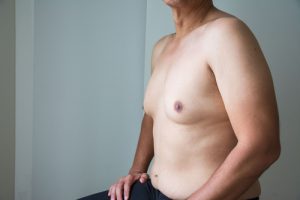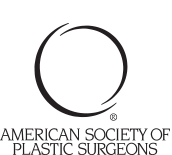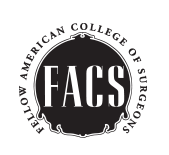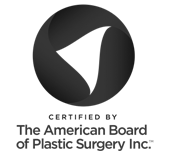Breast Reduction Surgery for Men
Posted November 28, 2018 in Gynecomastia Surgery, Male Plastic Surgery
One of the most common cosmetic concerns that our male patients have is a condition known as gynecomastia (the appearance of male breasts). Often caused by hormonal imbalances, gynecomastia is more common than many patients realize. Because the condition is so common, there are now effective treatment options available, including male breast reduction.

While bothersome to many men, gynecomastia is not medically concerning or dangerous. Surgical repair for gynecomastia is often sought for purely aesthetic reasons, and because of this, the procedure is not usually covered by health insurance. However, this condition can severely affect many men’s lifestyles: some men may avoid strenuous activities due to pain or discomfort caused by their enlarged breasts. It is important to note that if you feel any pain or discharge from the nipples in conjunction with your gynecomastia, it is important to talk with your physician immediately to rule out any additional medical complications.
Gynecomastia can be characterized in different ways, including:
- Excess localized fat
- Excess glandular tissue
- Excess breast skin
- Unilaterally (in one breast)
- Bilaterally (in both breasts)
While there are some prescription medications available that can help treat gynecomastia, the most dramatic results are achieved through surgery.
Main Causes of Gynecomastia
For many men, a masculine, confident appearance is rooted in their physique. If your chest has begun to take on a more feminine, breast-like appearance, then you may be suffering from gynecomastia or pseudogynecomastia. The appearance of male breasts can be the result of glandular tissue development under the areolas or excess fat accumulation.
Gynecomastia in some form is common in about 15 percent of men, and it can develop for a number of reasons. It can also be corrected easily.
Mild and severe forms of male breast formation, whether it be gynecomastia or pseudogynecomastia, are treatable. However, understanding the root of your breast tissue development may prevent future issues.
Hormones
When men have estrogen levels that are above the normal range, it can stimulate glandular tissue development. About 70 percent of boys will develop a mild form of gynecomastia during puberty, which typically resolves itself naturally. Issues arise when gynecomastia is present in older men because it can be indicative of an underlying medical condition that is causing the body to produce too much estrogen.
Medications
Several types of medication can cause gynecomastia as a side effect. The effects of these medications can be more pronounced in men that are middle-aged or older. The following medications may result in glandular tissue development, and you should discuss their side effects with your physician.
- Antibiotics
- Heart medications
- Anti-anxiety drugs
- Tricyclic antidepressants
- Chemotherapy
- Some heartburn drugs
- Drug abuse
While harder drugs like heroin can cause gynecomastia, marijuana users tend to have higher rates of male breast formation. Additionally, people who abuse amphetamines and steroids are at high risks of developing gynecomastia. This is because drugs can affect the natural release of chemicals in your body, which results in the underproduction of testosterone or overproduction of estrogen.
Lifestyle Factors
Pseudogynecomastia is often the result of poor lifestyle choices that lead to men being overweight or obese. Pseudogynecomastia is marked by a breast-like appearance that is caused by fat accumulation under the areolas. It can often be treated through proper diet and exercise. However, stubborn deposits of fat may remain and require surgical correction.
What Is Gynecomastia Surgery?
To put an end to their emotional and physical discomfort, many men try to solve their gynecomastia with diet, exercise, or “magic” pills; however, these don’t work. At-home treatments are no match against excess glandular tissue and fat. Gynecomastia surgery, however, is an ideal procedure for men who suffer from overly large male breasts. Male breast reduction may be performed in different ways, depending on the severity of fat, glandular tissue, and skin needing to be removed. The goal of gynecomastia surgery is to provide a firmer, more masculine chest that complements a man’s entire frame.

Gynecomastia Surgery Techniques
Dr. Taylor believes that every man should be confident in his appearance. Having a more defined, masculine chest contour may help you feel more comfortable with your body.
Dr. Taylor will design an individualized surgery plan for each patient. To correct gynecomastia, he will perform one or a combination of the following techniques.
- Liposuction: Removes fat tissue by using the time-tested tumescent liposuction technique. This method involves injecting a solution to break up the fat before removal. Then, using the power-assisted or ultrasound-assisted (UAL) technique, the fat is suctioned through a thin, hollow tube (cannula) that is hooked up to a vacuum device.
- Surgical tissue excision: In 80 to 90 percent of cases, liposuction alone will successfully treat the problem. If there is any hard, glandular tissue present after the liposuction portion of the procedure is completed, then an open excision of this tissue is performed. This gets rid of excess glandular tissue or actual breast tissue, which cannot be liposuctioned. An incision is made around the bottom edge of the areola and through this incision the skin is lifted up and the underlying glandular tissue is surgically removed. In rare cases, excess skin may need to be removed as well.
If you are suffering from gynecomastia, you may be a good candidate for male breast reduction surgery. Schedule your consultation by calling us at (626) 314-6476 or by filling out our online contact form.



